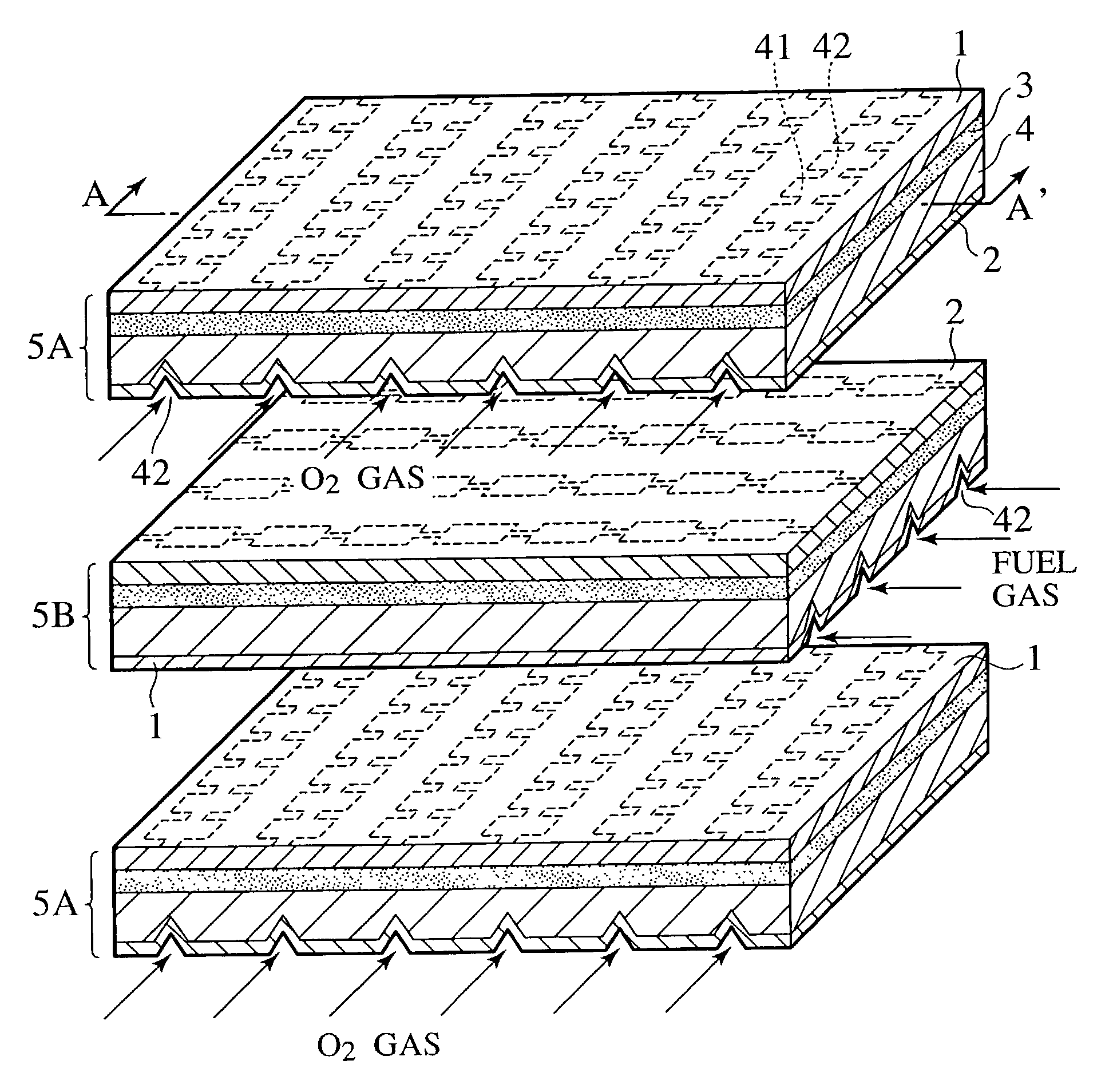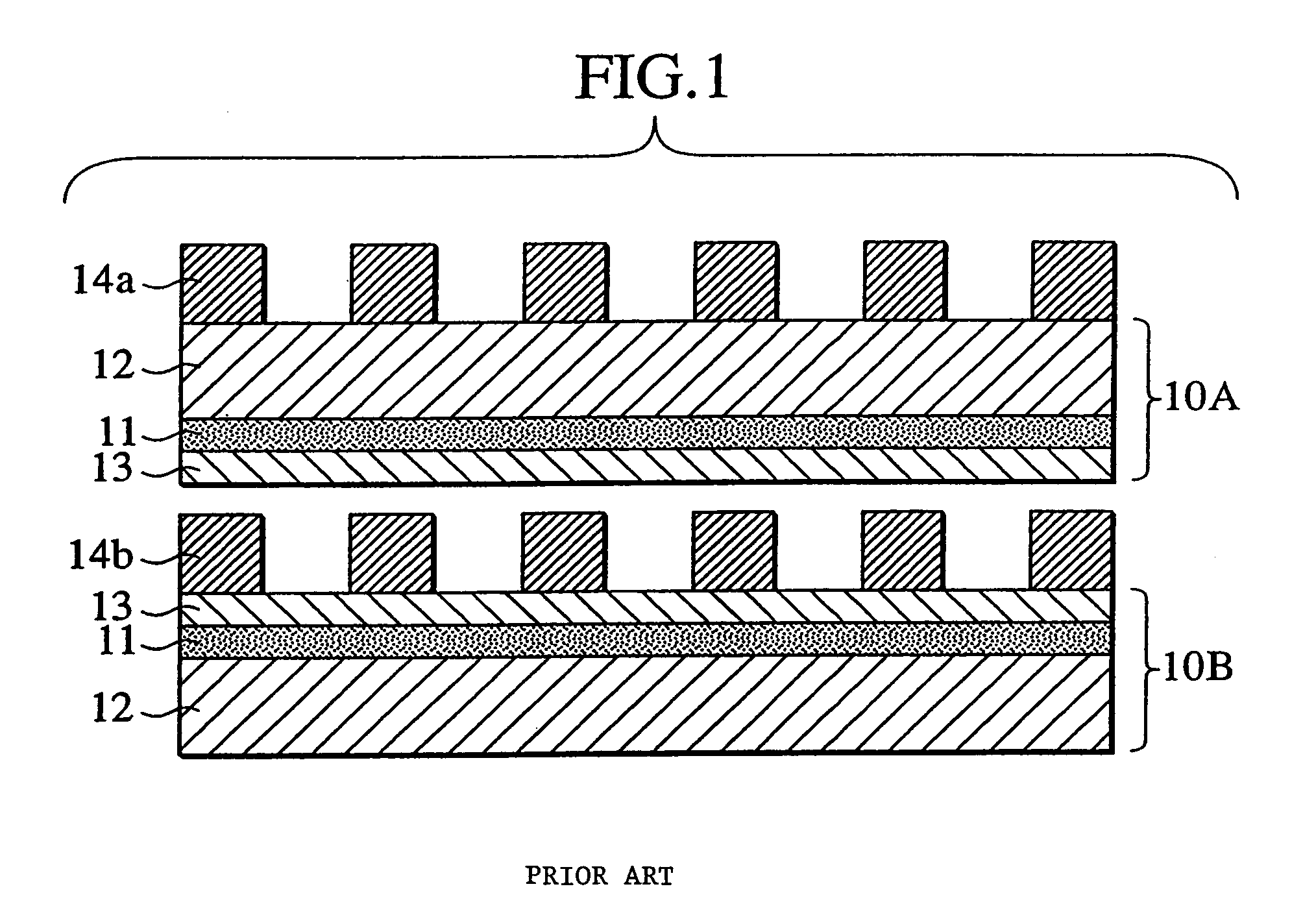Solid oxide fuel cell stack and method of manufacturing the same
a solid oxide fuel cell and stack technology, applied in the field of stacks, can solve the problems of improvement of series resistance components within fuel cells, form interconnections, and improvement of series resistance components, and achieve the effects of high resistance to high temperature oxidation atmosphere, high temperature reduction atmosphere, and fuel cell stack miniaturization
- Summary
- Abstract
- Description
- Claims
- Application Information
AI Technical Summary
Benefits of technology
Problems solved by technology
Method used
Image
Examples
examples
[0067]An embodiment of the present invention will be described below.
1) Treatment of Substrate
[0068]As the substrate, a (100) orientation single-crystal silicon substrate having a diameter of 5 inches and a thickness of 0.65 mm, one surface of which was mirror-polished, was used as the substrate. Antimony was previously doped to this substrate, and its resistively was 10 to 11 Ω cm. The substrate was cut to a square shape of 5 cm square by a dicing saw so that each side thereof is made to be (110) oriented. The substrate which was processed to a square shape was subjected to a dipping treatment for 10 minutes in a mixed solution of water:hydrogen peroxide:ammonium hydroxide=5:1:0.05, which was kept at 90° C. Thereafter, the substrate was dipped in 5% hydrofluoric acid aqueous solution for one minute and then dipped in pure water for one minute. Then, the substrate was taken out therefrom, followed by drying the substrate by ejecting nitrogen gas thereto. Immediately after drying the...
PUM
| Property | Measurement | Unit |
|---|---|---|
| electromotive force | aaaaa | aaaaa |
| thickness | aaaaa | aaaaa |
| thickness | aaaaa | aaaaa |
Abstract
Description
Claims
Application Information
 Login to View More
Login to View More - R&D
- Intellectual Property
- Life Sciences
- Materials
- Tech Scout
- Unparalleled Data Quality
- Higher Quality Content
- 60% Fewer Hallucinations
Browse by: Latest US Patents, China's latest patents, Technical Efficacy Thesaurus, Application Domain, Technology Topic, Popular Technical Reports.
© 2025 PatSnap. All rights reserved.Legal|Privacy policy|Modern Slavery Act Transparency Statement|Sitemap|About US| Contact US: help@patsnap.com



